While photographing a juvenile male Mountain Bluebird in Montana last week I was struck by the interesting variation in color and patterns of the adult male in breeding plumage as compared to those of the juvenile male. I thought some viewers might be interested in a photographic comparison of some of their development stages.
This flashy adult male was photographed in early June this past summer. He’s sporting the overall sky-blue plumage that I find so appealing in the males in particular. When you’re driving on a mountain road and a flock of these birds flies in front of you, the flashing blues really catch your eye.
I’m not really sure what motivated this unusual pose. It was apparently some kind of display that lasted for perhaps 5 seconds so I got quite a few shots of it. At the time I thought it looked like he was “dancing”.
This bird is a juvenile (most likely a male but at this stage of development sexes are similar – image taken 7/23/13). Note the general lack of blues except on the wings and tail.
This juvenile male is molting into his adult colors (image taken 9/10/13). At this stage they remind me of some human teenagers – a little gawky looking and unsure of their future course of development. Many of the blues that are filling in are quite splotchy among the juvenile browns…
and only a few lighter spots on the breast remain.
This view shows the black-tipped remiges (flight feathers) margined with grayish-white.
This fluffed up, rousing pose reveals some of the plumage colors that aren’t normally on the surface. Note that there are now hints of blue on the belly and flanks.
All this may be more than some wanted to know about plumage stages of Mountain Bluebirds but I find the contrasts between the awkward-looking juveniles and the sublime male adults to be quite interesting.
Ron


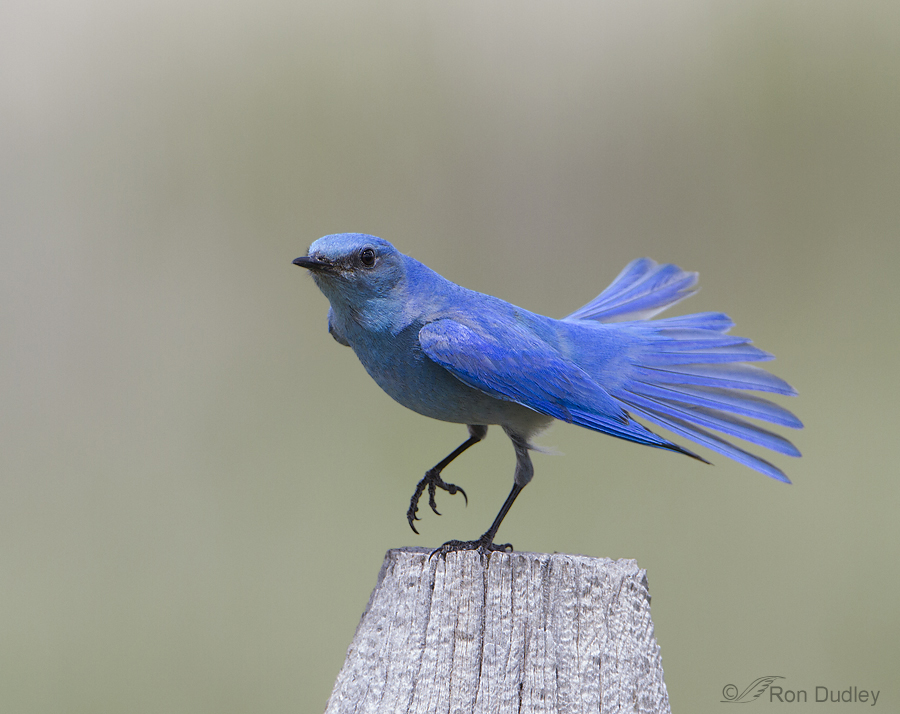
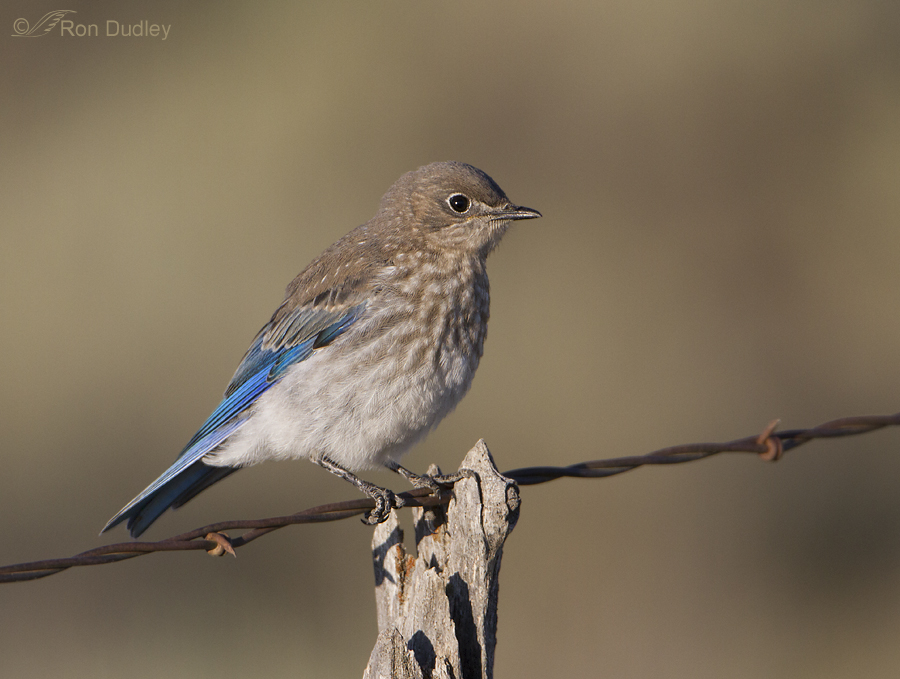
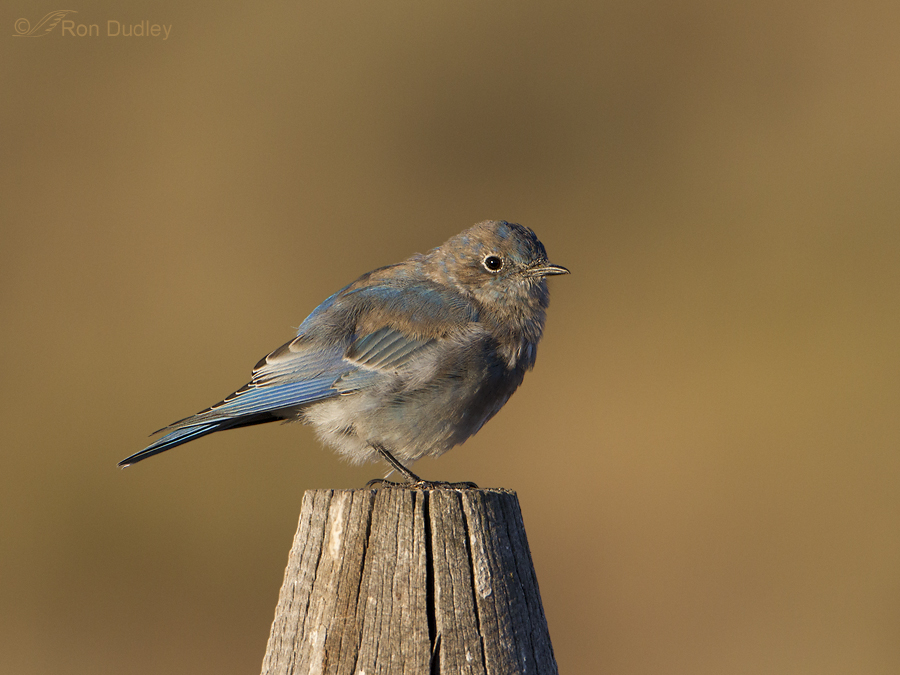
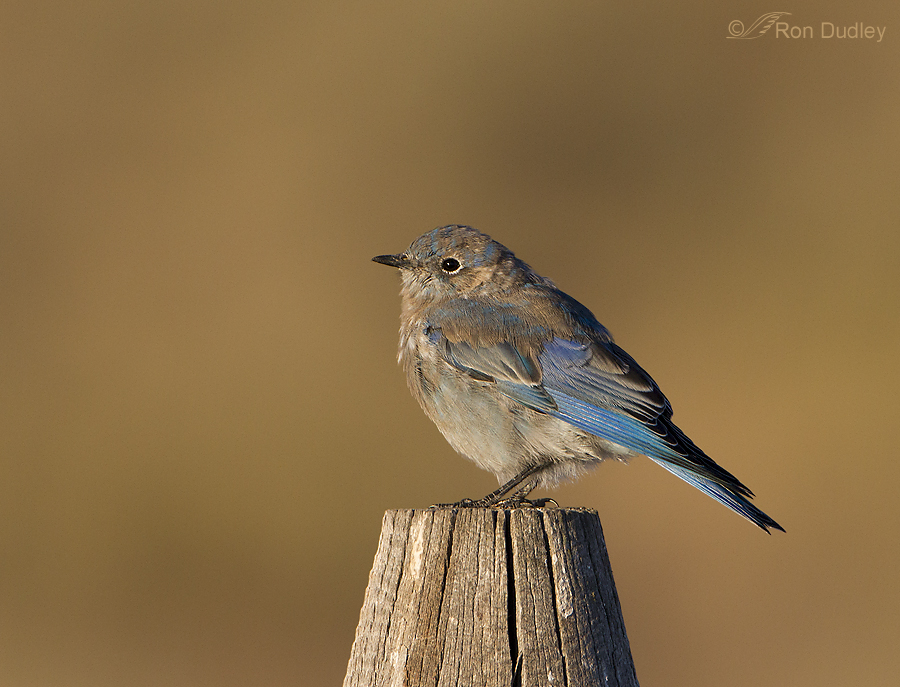
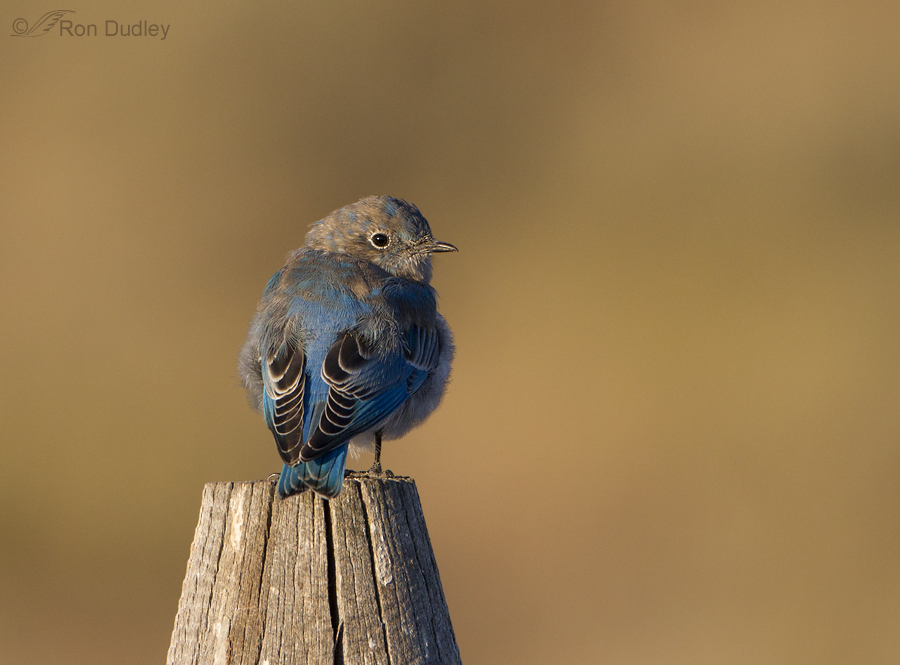
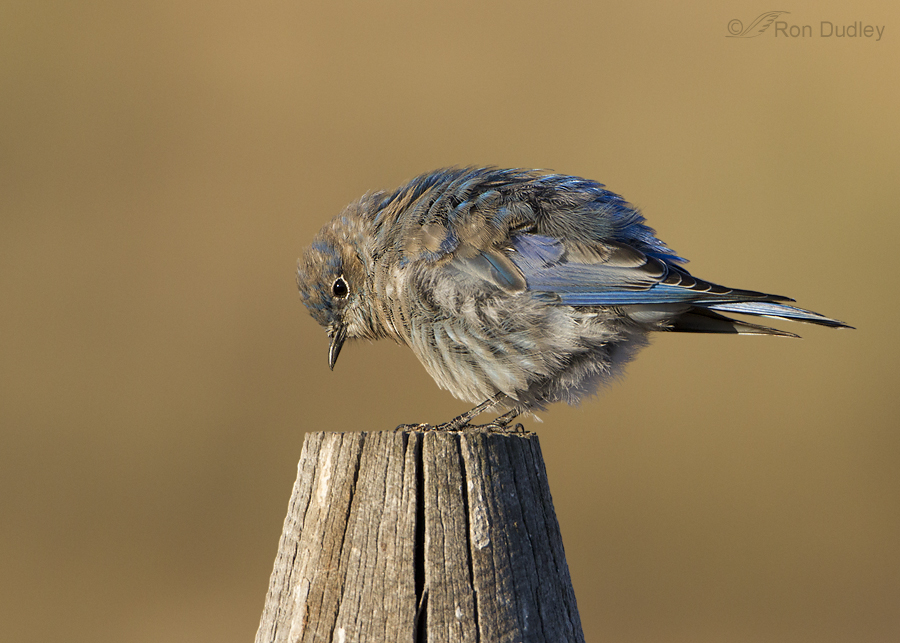
It is truly fascinating, the morph from ungainly youth to adult beauty. And if only adult beauty was recognised and applauded the same way in our society.
Thank you so very much for this series. I loved it. Again.
Thanks very much, Elephant’s Child.
Ron–there’s an almost ethereal beauty in the first shot, much like your magpie pictures…..was the bird “dancing” as in other photos?
Your pics helped keep me somewhat sane these long, last few days…thank you! And Mia….
His behavior reminded me of dancing, Patty but I’m sure it was some form of behavioral display. Pretty fun to watch and photograph.
I’m glad my photos helped you get through the anguish and that there was a happy ending!
So gorgeous! The younger ones look almost “tie-dyed” with their splotches of blue and tan. Still very pretty, although the blue male in the first pic is magnificent!
“Tie-dyed” – a good analogy, Leisa.
No Ron, never too much. All I learn from your posts and photos makes me more observant when I work with birds and enjoy watching them. Thanks.
I love hearing that, Diana. Thank you.
Beautiful shots of a bird much prettier than our Eastern Bluebirds, IMHO. I especially like the second image because of the barbed wire. Although some “purists” would advise removing it from the photo, I think adds an interesting contrast to the soft, delicate bird. Having experienced the viciousness of barbed wire, my admiration for the photo was seasoned with a little uneasiness.
Dwynn, Agreed – I’ve seen some pretty nasty things involving barbed wire too but I like the rusty wire on top of the interesting post anyway…
That adult male is certainly beautiful. An interesting series, and all well captured.
Sonja – agreed about the male. The female is a beauty also, just in a more subtle way.
Great shots! bEautiful, beautiful bird. Intersting how much they change…toung are so cute! Love the beautiful “Fandamgo ” pose in the first fram!
I like that pose too, Patty. Thank you.
Oh how I enjoyed these shots and info. of course the shots were just your usual Master Shots! Thanks so much for sharing your wonderful talent with us.
Charlotte Norton
Thanks very much, Charlotte.